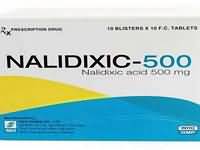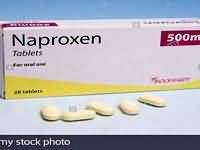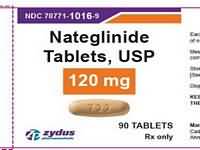Topotecan

CLINICAL USE
Treatment of metastatic ovarian cancerDOSE IN NORMAL RENAL FUNCTION
1.5 mg/m2 for 5 days, repeated every 3 weeksPHARMACOKINETICS
DOSE IN RENAL IMPAIRMENT
GFR (mL/MIN)
40–59 Dose as in normal renal function. See ‘Other Information’ 20–39 0.75 mg/m2/day. <20 Use with caution.DOSE IN PATIENTS UNDERGOING RENAL REPLACEMENT THERAPIES
IMPORTANT DRUG INTERACTIONS
Potentially hazardous interactions with other drugsADMINISTRATION
Reconstition
Add 4 mL of water for injection to each 4 mg vialRoute
IV infusion
Rate of Administration
Over 30 minutesComments
Dilute further in sodium chloride 0.9% or glucose 5% to obtain a concentration of 25–50 mcg/mL Once reconstituted use within 12 hours if stored at room temperature, and 24 hours if stored at 2–8°C if made under aseptic conditionsOTHER INFORMATION
Undergoes reversible, pH-dependent hydrolysis of the active lactone moiety to the inactive hydroxyacid (carboxylate) form. A relatively small amount of topotecan is metabolised by hepatic microsomal enzymes to an active metabolite, N-demethyltopotecan; the clinical significance of this metabolite is not known. Excretion is via biliary and renal routes with 20–60% excreted in the urine as topotecan or the open ring form If the patient has received extensive prior therapy it has been suggested that 1 mg/m2/day can be used in mild renal impairment and 0.5 mg/m2/day in moderate renal impairment. (Ormrod D, Spencer CM. Topotecan: a review of its efficacy in small cell lung cancer. Drugs. 1999, Sep; 58(3): 533–51.) In renal failure there is an increased risk of haematological toxicity (even at low doses, e.g. 0.5 mg/m2/day), therefore if it is to be used in severe renal failure, start at doses less than 0.5 mg/m2/day and monitor closely An alternative dosing schedule (Kintzel PE, Dorr RT. Anticancer drug renal toxicity and elimination: dosing guidelines for altered renal function. Cancer Treat Rev. 1995; 21: 33–64): CrCl 60 mL/min: 80% of dose — CrCl 45 mL/min: 75% of dose — CrCl 30 mL/min: 70% of dose — Bennett suggests: GFR>50 mL/min: 75% of dose — GFR=10–50 mL/min: 50% of dose — GFR <10 mL/min: 25% of dose — .
See how to identify renal failure stages according to GFR calculation
See how to diagnose irreversible renal disease
Home








